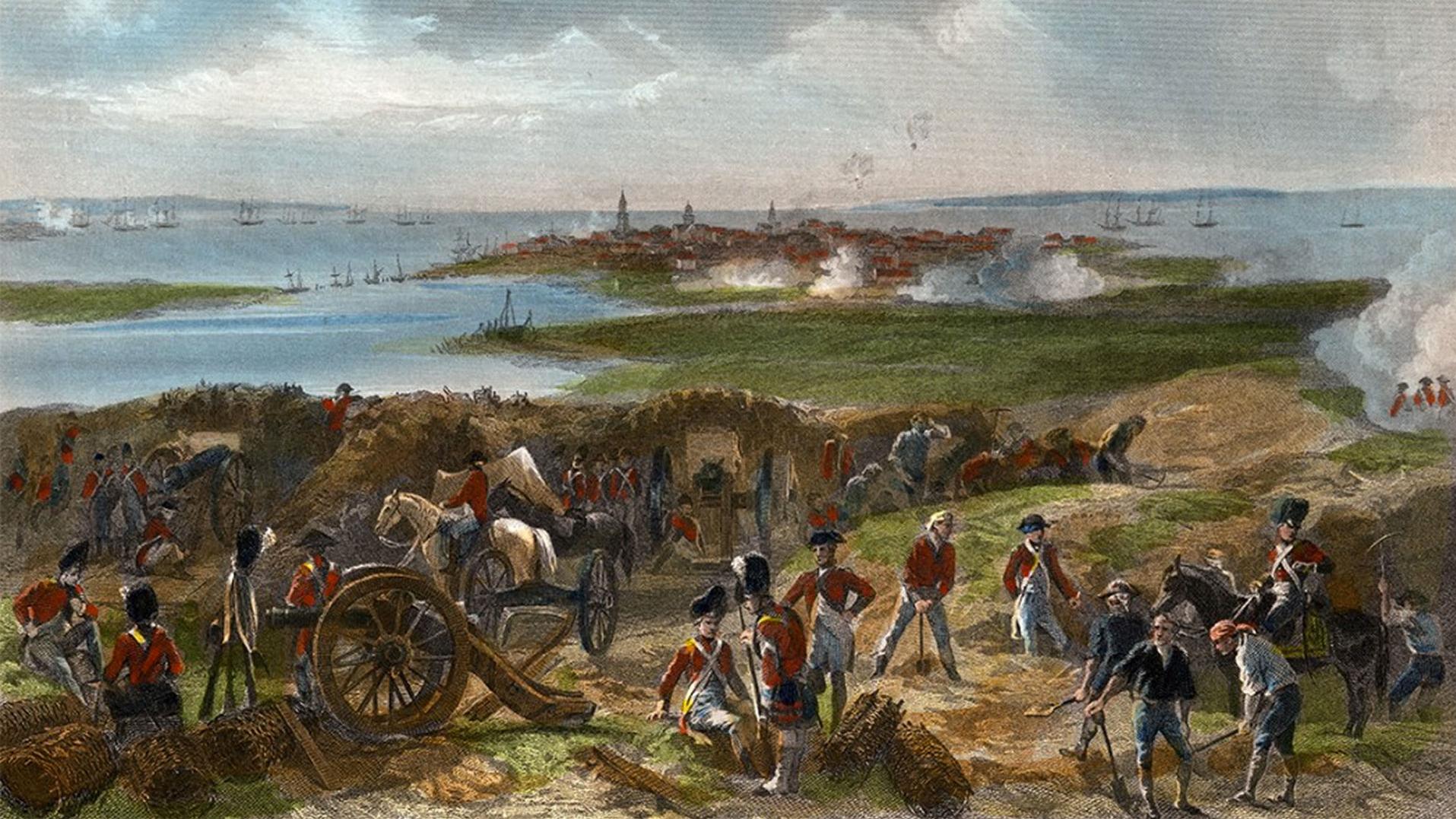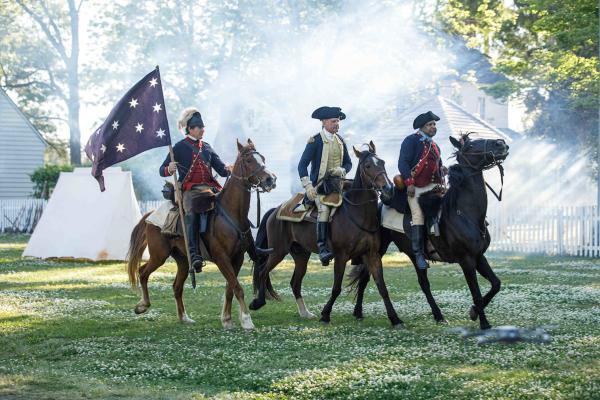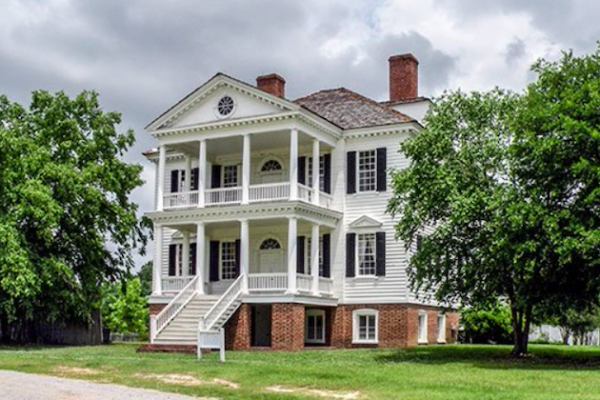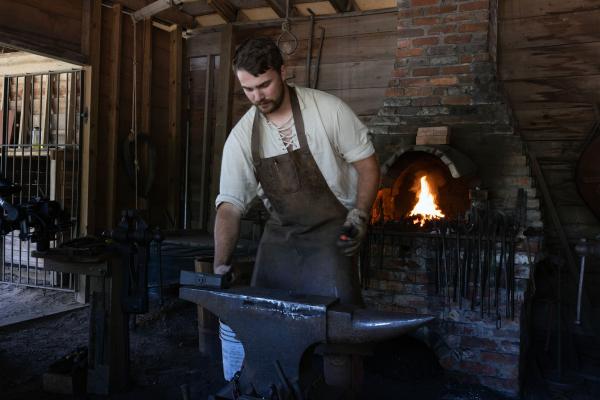
The Siege of Charleston - Horn Work
Reposted from battlefields.org
The British strategy for winning the rebellion in North America had changed by 1779. After the defeat of General John Burgoyne’s forces at Saratoga in October 1777, and a stalemate of engagements in 1778, it was believed that the real way to squash the Americans would be to invade the South, rally the Loyalists among the civilian population, and leverage these gains to cut off the South from the North. The plan was put into motion in the closing months of 1779. The first real test would be capturing the port city of Charleston, South Carolina.
As the British forces gathered themselves for the inevitable advance down the narrow neck of swamps and orchard farms leading to Charleston, General Sir Henry Clinton’s men came upon the defenses that would be the last chance the Americans had of holding onto the rebel town. A large fortress-like structure was the centerpiece of the fortifications protecting Charleston, the fourth largest populated city in the colonies and whose port provided the southern colonies with access to rich imports from the West Indies and beyond. Measuring six hundred feet across the front wall, the imposing site was a freestanding structure with angular points (horns) enclosing a ground area, consisting of demibastions (a half wall or partial rampart) and curtain walls (connecting two structural positions). A massive ditch of thirty-four feet wide was dug in front it to dispel enemy attacks. The forward defenses, built mainly of wood and earth, consisted of a series of redoubts and batteries connected by a strong line. In front, toward the enemy, was at least one, and probably two, rows of abatis. Just beyond the abatis was a twelve foot wide canal stretching across the mile-wide peninsula to the marsh creeks that emptied into the Ashley and Cooper rivers. Clinton’s men accessed the situation and began digging their siege trenches with the site of Charleston’s Horn Work to be the roadblock from claiming their prize.
The name “Horn Work” is a generic term used to describe a broad fortress with a central gateway built to control the flow of traffic in and out of a town. Open at the rear initially, it was closed during the siege with wood and earth to form a strong citadel. It is believed that the front tabby wall was at least twelve feet high and the second wall built nine feet apart. The space between the walls was filled with earth & sand to create platforms for the eighteen pieces of artillery. Designed in 1757 and built during the French and Indian War, the structure covered approximately ten acres and was constructed using an oyster-shell cement called tabby. It was the northernmost link in a chain of fortifications that surrounded the city. At the time of the Siege, the Horn Work straddled the “Broad Path” (now King Street) just north of Charleston’s Boundary (now Calhoun) Street. The gate in King Street (referred to as “the White Gate”) was flanked to the east and west by pair of horn-like half-bastions that projected northward, away from the town. The flanks of the city, along the Ashley and Cooper rivers, and the tip of the peninsula were protected by various batteries and forts to give Charleston a strong perimeter defense to prevent British ships from sailing up and enfilading the defensive works. The Americans scuttled eight ships in a line across the Cooper River as a further preventative measure. The British would be forced to contend with these measures, along with the shallow sandbars and shoals that made the harbor dangerous for inexperienced naval captains.
The British army laying siege under Clinton consisted of 8,500 troops sailed in from New York. The Royal Navy’s commander, Vice-Admiral Mariot Arbuthnot, had left New York for Savannah, Georgia with 5,000 sailors on ninety troop ships and fourteen warships the day after Christmas, 1779. Trouble struck immediately. Dispersed by a four day gale, the cavalry’s 500 horses had to be thrown overboard after the storm’s turbulence broke all of their legs in the cargo holds. Clinton landed his army on Simmons and Edisto Islands, south of Charleston, on February 11. The British crossed the Stono River onto James Island on February 25, and by March 10, had made it safely to the mainland. They advanced to Middleton Place and Drayton Hall on March 22 and crossed the Ashley River to the Charleston peninsula on March 29.
During their trek, the British were met with several skirmishes: Stono River (February 22), Oohey Creek (February 26), Ft. Johnson (February 26), Matthews Ferry (March 5), Ferguson’s Plantation (March 6), Wappoo Creek (March 11), Salkahatchie (March 12), St. Andrew’s Church (March 15), Wappoo Cut (March 21), St. Andrew’s Creek (March 22), Pon Pon (March 23), Dorchester Road (March 25), Rantowles Bridge (March 27), Gibbes’ Plantation (March 29). Resistance was minimal and none of these engagements slowed the British advance. Two more relevant, concurrent battles elsewhere, Moncks Corner on April 14 and Lenud’s Ferry on May 6, did consequently slow the siege.
Continental Major General Benjamin Lincoln, commander of the city’s defenses, was put in an impossible situation. It would turn out his greatest weakness was not his breastworks or lack of powder, or the approaching British regiments. It would be the town’s government and civilians. Lincoln had considered getting the Continentals out of the city to prosecute the war elsewhere, but was voted down by Charleston’s leaders who felt confident their defenses would hold as they did in 1776. By April 21, Lincoln communicated to Clinton that he was willing to consider terms of capitulation. However, Charleston civilians informed Lincoln that if an attempt were made to abandon the city, they would open the gates to the enemy. Lincoln had no choice but to remain bottle-necked. The British unfolded their third parallel on April 28 within a few yards of the Horn Work’s canal. Seeing this, the Americans improved their fortifications by closing in the rear of the Horn Work and constructing redoubts to the left and right. On May 2, the British pushed a trench up to the canal in front of the city’s defenses to drain it. At this point, the Americans were beginning to run low on valuable supplies. To compound matters, Fort Moultrie, located east on Sullivan’s Island, ignominiously surrendered to the British Navy on May 7 without firing a shot. Confusion began to spread within the American ranks holding the Horn Work and surrounding defenses. Some temporarily abandoned their posts, mistakenly thinking capitulation had been agreed upon, only to be hurried back to the front line by continuing enemy fire. The British army commanded the entire peninsula north of Charleston, had removed any remaining threats along the harbor, and the navy was now free to move reinforcements from James Island up the Ashley River as they pleased. The Americans defenses remained intact, but the city of Charleston was completely surrounded.
While standing atop the Horn Work on May 9, American Brigadier General William Moultrie wrote, “We remained near an hour silent, all calm and ready, each waiting for the other to begin. We fired the first gun, and immediately followed a tremendous cannonade [from 200 pieces of heavy cannon], and the mortars from both sides threw out an immense number of shells; it was a glorious sight, to see them like meteors crossing each other, and bursting in the air; it appeared as if the stars were tumbling down. The fire was incessant almost the whole night; cannon-balls whizzing and shells hissing continually amongst us; ammunition chests and temporary magazines blowing up; great guns bursting and wounded men groaning along the lines; it was a dreadful night! It was our last great effort, but it availed us nothing; after this, out military ardor was much abated; we begin to cool, and we cooled gradually, and on the eleventh of May we capitulated, and in the morning of the twelfth, we marched out and gave up the town.”
On May 12, the gates of the city opened at 10:00am and the Continentals formed into ranks and prepared to march out of the gate to the city at the Horn Work. One British company and one Hessian company of grenadiers, commanded by Major General Alexander Leslie, took possession of the Horn Work as the Americans prepared to surrender. At the entrance to the gate, Lincoln and Moultrie received and greeted Leslie. Once the British were in the Horn Work, the Americans marched out at 11:00am with a “Turk’s march.” British troops lined the canal and the second parallel to observe the surrender. Lincoln was denied the military honors typically given to a surrendering commanding officer, a move repaid in full seventeen months later at Yorktown.
Lincoln surrendered 5,266 men to the British. American losses during the siege were 89 killed and 138 wounded as well as the loss of tens of thousands of armaments. The British suffered two officers and 74 enlisted men killed, with two officers and 181 enlisted men wounded. The loss of Charleston was devastating. This was the largest surrender of an American fighting force during the American Revolution, and the effects once again cast serious doubt over whether American Independence could be won. Clinton would sail back to New York to monitor the impending French naval forces lurking along the coast, leaving command of the Southern theatre in the hands of General Charles, Lord Cornwallis. The next year would be one of drastic shifts in British and American tactical and strategic engagements, coupled with a surging partisan civil war among the citizens of the Carolinas.
The Horn Work proved to be insignificant in the Siege of Charleston’s defense as other factors caused her to surrender. The structure itself remained largely intact, despite the British cannon pounding away at her walls. Following the war, the Horn Work was scrapped for residential development as the city continued its expansion northward along the peninsula. Only small remnants remained of the fortress into the nineteenth century. In 1882, Charleston dedicated the surrounding area to war hero Francis Marion, and enclosed the last portion of the Horn Work in an iron fence. This remains today as one of Marion Square’s monuments.
Uncovering History
We invite you to visit the preserved locations along the Liberty Trail and to immerse
yourself in the extraordinary events that determined the fate of a nation.





